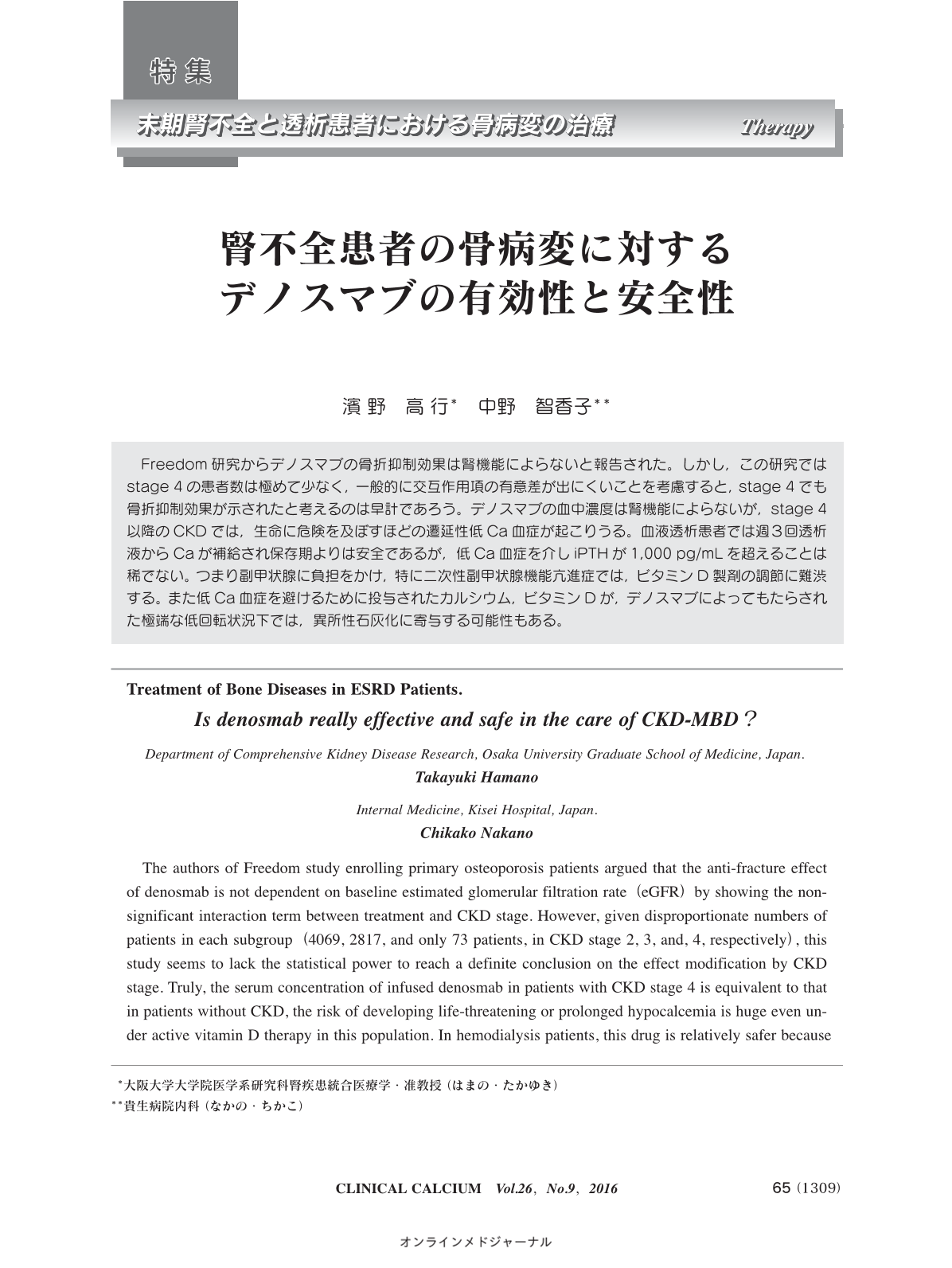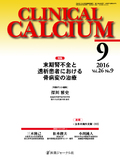Japanese
English
- 有料閲覧
- Abstract 文献概要
- 1ページ目 Look Inside
- 参考文献 Reference
Freedom研究からデノスマブの骨折抑制効果は腎機能によらないと報告された。しかし,この研究ではstage 4の患者数は極めて少なく,一般的に交互作用項の有意差が出にくいことを考慮すると,stage 4でも骨折抑制効果が示されたと考えるのは早計であろう。デノスマブの血中濃度は腎機能によらないが,stage 4以降のCKDでは,生命に危険を及ぼすほどの遷延性低Ca血症が起こりうる。血液透析患者では週3回透析液からCaが補給され保存期よりは安全であるが,低Ca血症を介しiPTHが1,000 pg/mLを超えることは稀でない。つまり副甲状腺に負担をかけ,特に二次性副甲状腺機能亢進症では,ビタミンD製剤の調節に難渋する。また低Ca血症を避けるために投与されたカルシウム,ビタミンDが,デノスマブによってもたらされた極端な低回転状況下では,異所性石灰化に寄与する可能性もある。
The authors of Freedom study enrolling primary osteoporosis patients argued that the anti-fracture effect of denosmab is not dependent on baseline estimated glomerular filtration rate(eGFR)by showing the non-significant interaction term between treatment and CKD stage. However, given disproportionate numbers of patients in each subgroup(4069, 2817, and only 73 patients, in CKD stage 2, 3, and, 4, respectively), this study seems to lack the statistical power to reach a definite conclusion on the effect modification by CKD stage. Truly, the serum concentration of infused denosmab in patients with CKD stage 4 is equivalent to that in patients without CKD, the risk of developing life-threatening or prolonged hypocalcemia is huge even under active vitamin D therapy in this population. In hemodialysis patients, this drug is relatively safer because each dialysis session delivers calcium into the circulation 3 times a week. However, even with concomitant administration of massive active vitamin D, the increase of intact PTH levels greater than 1000 pg/mL by this agent is not rare. In other words, this drug worsens secondary hyperparathyroidism. Moreover, reportedly, calcium and active vitamin D administered to avoid hypocalcemia can lead to ectopic calcification especially under the low bone turnover induced by this agent. In fact, transient hypercalcemia often follows hypocalcemia by the inevitable calcium supplementation.



